Researchers and commercial producers are paying greater attention to cage culture these days. For reasons such as rising demand for fish, diminishing wild supply, and bad farm economics, interest in cage-fish farming has grown. Traditional crops are becoming less and less popular among small- and medium-sized-scale farmers. Opportunities for small-scale aquaculture can be found even in a rapidly developing sector.
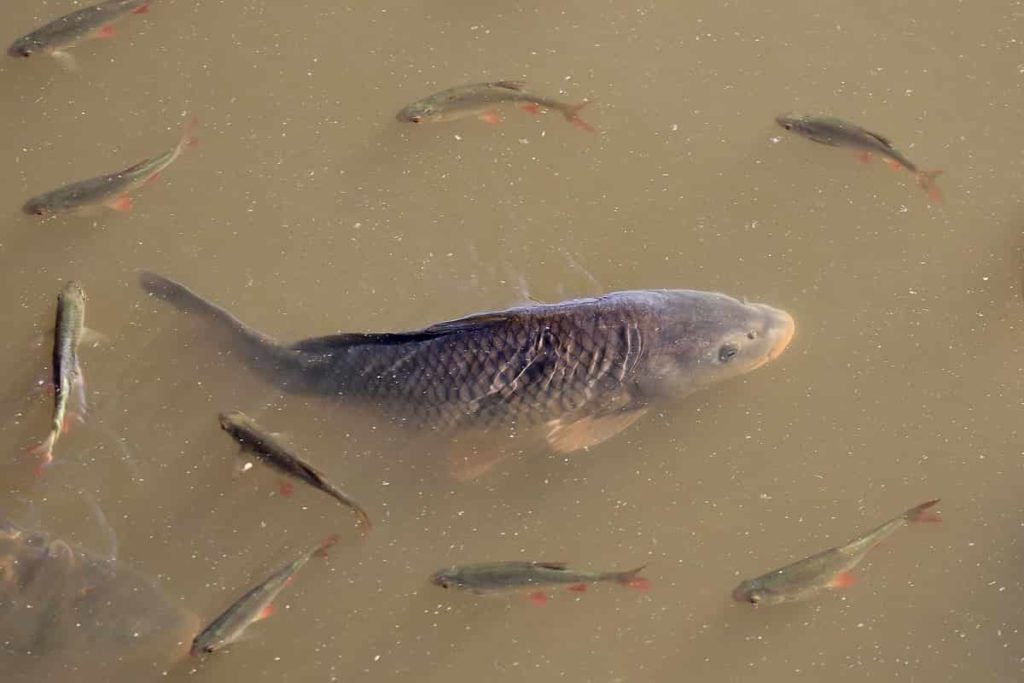
Cage culture also allows farmers to use water resources that would otherwise go unused. Below will learn about cage culture in India, how to start cage culture fish farming in India, why cage culture is profitable, how to maintain a cage culture farm, and the cost and profits involved in the cage culture business in India.
What is cage culture in the fishery?
Cage aquaculture raises fish in an enclosed net cage in an existing body of water while allowing the water to circulate freely. It is a production system for aquaculture that comprises a floating frame, net materials, and mooring system (with rope, buoy, anchor, etc.) with a circular or square floating net to contain and culture a huge number of fishes. This system can be deployed in a reservoir, river, lake, or ocean.
A catwalk and guardrail surround a floating cage battery. Fishery cages are divided into four categories: fixed cages, floating cages, submerged cages, and submersible cages. The submerged cages are the most common type. Cage farming is a low-risk approach that yields excellent profits and produces the least carbon emissions. Growing fish in an existing water body can grow without needing a steady flow of clean, oxygenated water.
As a result of the cage farms’ placement, fish are exposed to oxygen and other naturally occurring circumstances. Cage farms. A considerable contribution to India’s total fish output might be made by the cage culture technique, owing to the large yields that can be achieved. Cage culture is a viable option for using India’s extensive coastline, large brackish water regions in coastal states, and other neglected water bodies.
It’s an excellent way for small-scale fishers to supplement their income since it needs little or no land space and only a minimal initial investment. Due to the low labor required, this project is ideal for a small family to embark on. The cage and its attachments can be designed to meet the individual farmer’s needs.
Why cage culture?
A total of 3.25 million hectares (ha) of inland water resources in India, most of which are in the tropical zone, making them the country’s most significant inland water resource. Fisheries in small reservoirs, medium reservoirs, and large reservoirs have all produced fish yields of at least 50 kilograms per hectare per year, 20 kilograms per hectare per year, and 8 kilograms per hectare per year, with room for further improvement through capture fisheries, including those based on culture.
Auto-stocking has an extremely poor success rate in Indian reservoirs, particularly the smaller ones. During the summer, many smaller reservoirs are entirely or partially depleted, leaving no fish to sustain them. The fisheries in these bodies of water would be substantially improved if they were stocked on a regular, sound, and maintained basis. The primary goal of cage culture addressed here is to raise fingerlings at least 100 millimeters (mm) long, mainly carp, for stocking reservoirs.
In case you missed it: How to Start Perch Fish Farming: Raising in Ponds, and Cages, A Step-By-Step Guide for Beginners
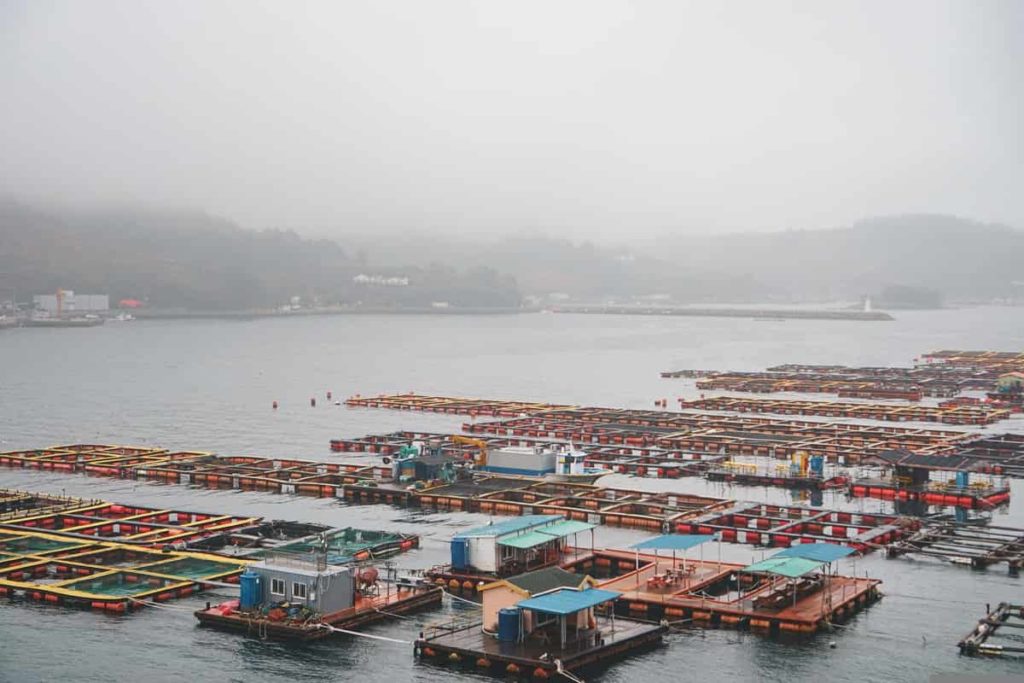
To get the most fish out of reservoirs, it’s critical to use the proper kind of fish, use the correct size seed, and introduce it at the right time. India produces 22 billion fish fries annually. However, there is a severe scarcity of fingerlings for stocking reservoirs, notwithstanding this fact. Transporting fingerlings to reservoirs frequently results in a high death rate. Fingerlings raised in cages on-site provide a chance to deliver stocking materials and critical inputs in a program to improve Indian reservoir fish productivity.
About inland cage culture in India
Reservoirs make up the greatest inland fishing resource in India. Significant additional areas are being added to them annually due to the development of new impoundments brought about by the construction of dams over rivers and streams. These water bodies are frequently employed to capture fisheries by local fishers; yet, due to insufficient seed supply and a lack of understanding of reservoir fishery development among stakeholders, the productivity of these rich resources has remained at 50 kg/ha.
This is a much lower rate compared to those in other Asian and Latin American nations. On the other hand, land-based aquaculture systems are becoming increasingly capital-intensive due to the exponential increase in land costs. Therefore, the time has come to harness these water resources that have not been fully explored using modern aquaculture practices such as cage culture.
Various research institutes conducted trials of cage culture in Indian reservoirs over the last three decades, particularly for rearing carp seed to a bigger size for stocking in the reservoirs. However, raising Tilapia and other Pangasius species has become a commercial industry in the last ten years. The adoption of this technology was met with several fundamental obstacles, including the availability of seed and feed, the government’s regulations, the market’s acceptability, and so on.
Nonetheless, the results of these experiments conducted by private entrepreneurs were rather positive. Even the government has gotten involved, formulating policies on cage culture and providing financial support and educational opportunities for those interested in the emerging industry.
The National Fisheries Development Board (NFDB) is now encouraging business owners by performing demonstrations in several states via the respective governments of those states. More than 100 units of commercial cage culture are currently under operation in India, and this figure is multiplying.
Demand for inland aquaculture in India in the coming future
The quantity of food produced in India places it at the number two spot worldwide. Fish and marine merchandise form an essential constituent of India’s food production. As a result of its 8041 kilometers of coastline, 3 million hectares of reservoirs, and 1.2 million of brackish water, the Indian subcontinent has a bright future in producing marine goods. India is the world’s third-biggest fish producer and plays a significant part in the industry.
Since the 1950s, the Indian fisheries industry has seen significant growth, reaching yearly output levels of nearly 7 million tonnes of fish and shellfish from capture fisheries and aquaculture. India is responsible for producing around 7 percent of the world’s total aquaculture output and roughly 5 percent of the world’s total fish production.
In case you missed it: Earning 10 Lakh Per Year from Biofloc Fish Farming – A Success Story, Double Your Profit with Biofloc
The nation’s fisheries and aquaculture industries are poised for explosive expansion, which presents a huge opportunity for the government. In contrast to the coastal fish output, which has remained mostly unchanged as it has everywhere else, inland aquaculture production in India is making significant progress.
The promotion of inland aquaculture in India is focused mainly on the rearing of perch, carps, and other species of catfish, including Pangasius and freshwater prawns. Tilapia, being introduced responsibly, also has substantial potential in the future. As a result of the wealth of resources that have untapped potential and the significance assigned to the sector on a national level, aquaculture in India is positioned to see rapid growth shortly.
What are the advantages of cage culture?
For various reasons, open freshwater ecosystems, such as reservoirs, are well-suited to cage culture. Using the naturally occurring productivity of water bodies frees up other resources by using them more effectively. The cages are constructed and operated using basic technologies and locally accessible materials, making them ecologically, economically, and socially sound. Rearing carp fingerlings have little effect on the ecosystem since they eat at a low trophic level.
Distinct carp species with different eating patterns and their ability to eat various additional foods optimize fingerling feed intake while decreasing competition among species, waste, and the pollution that results from this waste and competition. Cage culture reduces predation losses and makes it easier to take preventative actions in case of a disease breakout, resulting in high survival rates for fingerlings.
Since the daily maintenance and monitoring protocols are straightforward, as is the harvesting process, it efficiently uses human resources. High yields can be attained at a low cost since cage culture can be performed extensively. As most reservoirs in India have many purposes, including the provision of drinking water, cage culture is ideal because it pollutes the reservoir slightly and helps keep it healthy ecologically.
What are the disadvantages of cage culture?
Cage culture has several hazards if not well handled. If the cages are placed incorrectly, they might obstruct navigation or detract from the beauty of a reservoir. Improperly positioned cages may harm the sedimentation process. Unconsumed feed and fish fecal material can damage the environment if cage culture is carried out too intensively or poorly managed.
To prevent cage batteries from being destroyed by high currents or floods during the summer, place them in sheltered inlets far from solid winds. When raising fish to fingerling size, theft is seldom an issue. Intensive cage aquaculture for the production of marketable fish or prawns has specific challenges.
Therefore the method is only utilized in Indian reservoirs to raise fingerlings, with minimal usage of supplementary feed. Controlled waste output from cage culture can be beneficial in maintaining water nutrient levels in reservoirs transitioning from oligotrophic to mesotrophic conditions.
How to start cage culture fish farming In India
Site selection
Before selecting a place for cage culture, certain aspects must be considered. The physicochemical factors, such as temperature, salinity, oxygen, wave action, pollution, algae blooms, and water exchange, affect whether or not a species can flourish in a given habitat. The circumstances of the weather, the availability of shelter, the depth of the substrate, and other factors are all important considerations during the site selection process.
The last thing that has to be taken care of is the legal factors, such as access, closeness to hatcheries or fishing harbors, safety, economic, social, and market considerations, etc. The following are the most important considerations while choosing a location: It is recommended that there be at least 5 meters of water column depth. There should be no local or industrial contamination in the water supply, which should be clear and flow freely.
Sites should be sheltered bays in large and medium-sized reservoirs to defend against severe winds. Sluice gates and irrigation channels might cause problems for the cage if it isn’t anchored deep enough in the reservoir. Locals and grazing animals shouldn’t be able to disrupt them regularly.
Access to land and marine transportation is essential. To prevent fouling, make sure there are no algae blooms present. Aquatic macrophytes and large concentrations of wild fish that deplete the water’s oxygen content should be avoided. To avoid obstructing traffic, cages should be put out of the way. Ghats, where people bathe, should be avoided. Chosen areas must be safe.
In case you missed it: Fish Farming in Karnataka: How to Start, Subsidy, License, and Business Plan
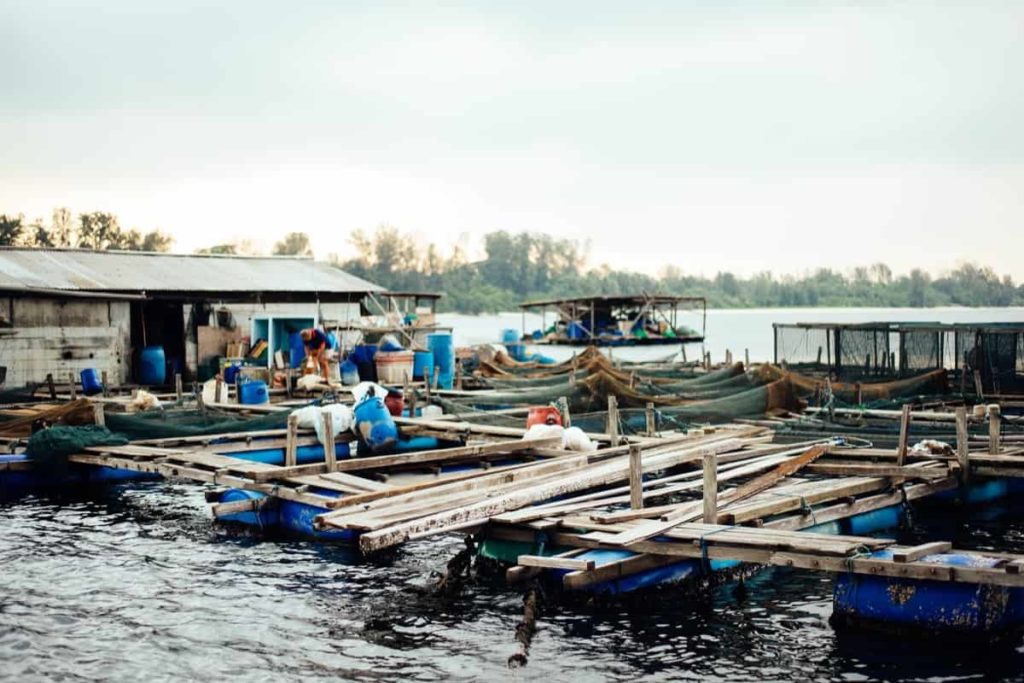
Fishes that are preferred for cage culture
Many biological factors should be considered when selecting cage-culture species, including hardiness, rapid growth, effective food conversion, the availability of high-quality seeds, and disease resistance. In India, the most preferred species for cage culture is Tilapia.
Know the types of cages in cage culture
In cage aquaculture, there are four types of fish cages: fixed, floating, submerged, and submerged. With a depth of less than – meters, the fixed cage is the simplest basic, and most often used kind of cage.
Size of the cage
It is a proven fact that, given the limitations of the materials and construction techniques, prices per unit volume fall as cage size increases. In addition to HDPE cages for seed growing, CMFRI has developed open sea cages with diameters of 6 m and 15 m for grow-out fish culture. Due to the ease of movement and less labor, a 6 m grow-out cage is the ideal size. Fingerlings can be housed in 2m enclosures.
Choosing cage frames and nets
It’s possible to employ various cage materials in cage farms. Many types of materials are used in producing these pipes, such as HDPE, galvanized iron, and polyvinyl chloride (PVC). However, HDPE frames have a high price but a long lifespan. Small groups and fishers should use Galvanized Iron (GI) frames coated with epoxy, which is more cost-effective.
When compared to HDPE frames, GI frames have a shorter lifespan. To see which worked best, different net sizes and materials were used for cage farming in India. The CMFRI has employed HDPE nets that are braided and twisted to grow out. In certain cases, it might endure for many seasons.
Because of its lightweight, a nylon net can be a cost-effective option, but more ballast weight is required to maintain its shape. The cost must be considered when adopting innovative netting materials like sapphire or Dyneema for a net cage. A net with a depth of 2 to 5 meters works well. Predator nets are essential in open sea cage culture to protect the fish from predatory organisms.
Stocking of the fish
Although species needs and operational concerns should guide stocking density decisions, the impact of stocking density on growth and productivity has been shown experimentally. The size of the cages and the eating habits of the cultivated species both have a role in determining stocking density. A fish’s species and size determine its ideal stocking density.
Ideally, healthy carp fish between 12 and 25 millimeters long should be used for fingerling rearing in Indian reservoir cages. Since eutrophied nurseries are a common source of fungal infections, advanced fry larger than 35 mm should be avoided in cage culture until the fingerling stage. The fungus attacks Indian big carp in particular. Cages in Indian reservoirs should be stocked at a density of 250 carp fry, measuring 12-18 mm per cubic meter.
To allow for conditioning at the point of procurement and acclimatization at the point of release in cages, the fry should be released late in the day or early in the evening. Transporting the fry with an empty stomach puts them at risk of being poisoned by the ammonia and carbon dioxide produced by fish waste. Acclimatization of fry in cages before release is critical to maintaining a healthy habitat, particularly regarding temperature.
A polythene package containing 1,000 fry and 33% oxygen is carried with the fry and maintained in cages for at least an hour before the discharge of the fry. Prophylactic steps are taken on the fry before release to keep them free of diseases and parasites. A 5-6 percent salt solution and potassium permanganate (5-8 percent) are dipped into the cage water for 1 to 2 minutes before they are released back into the water.
In case you missed it: Fish Farming in USA: How to Start, Breeds, Business Plan, and Guide for Beginners
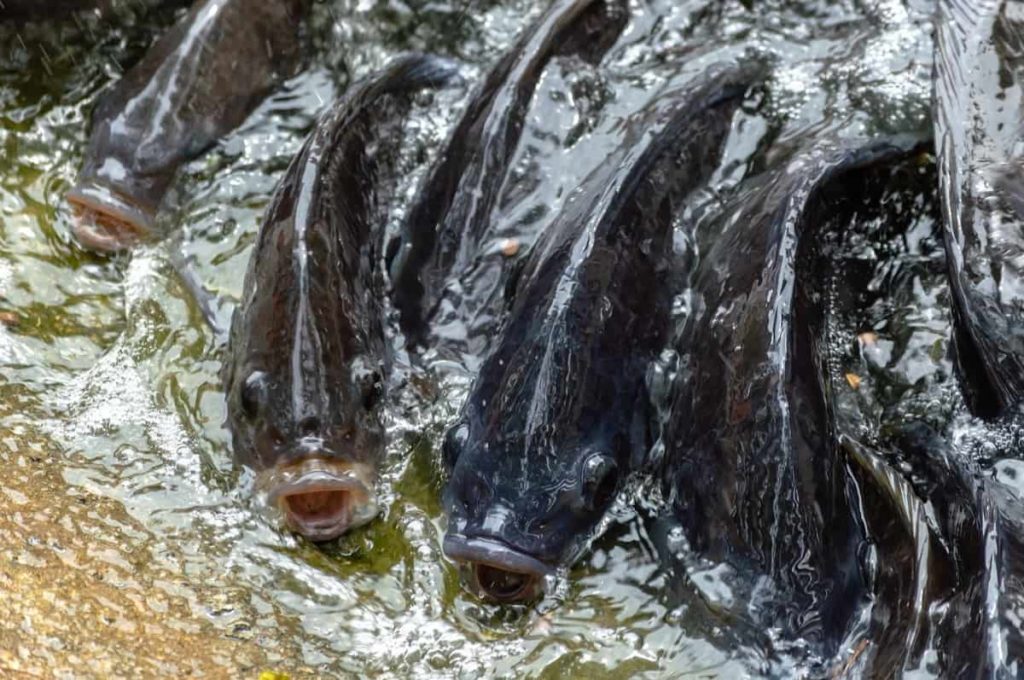
Feed details in cage culture
Carbohydrates, fat, minerals, protein, and vitamins are any feeding product’s five most important components. For an animal to develop properly, it must get enough protein. Listed below are the nutritional needs of carnivorous marine fish (as a percentage):
| Fish size | Crude fiber | Crude fat | Crude protein | Moisture |
| 1 – 20 gm | <4 | >5 | >43 | <12 |
| 20 – 50 gm | <4 | >5 | >40 | <12 |
| 50 – 300 gm | <4 | >5 | >38 | <12 |
| >300 gm (market/selling size) | <4 | >5 | >36 | <12 |
To reach their full potential, marine fish need diets higher in protein (35-40%). The size of the feed pellets should be changed about the fish’s growth. As farming advances, the feeding rate for immature fish may be lowered from 10% to 3% of body weight. An FCR of 1:2 is recommended. Overfeeding fish may lead to waste and environmental contamination. Thus, only the appropriate diet should be fed to them.
Protein-rich feed components include fish and meat items from animal sources, as well as oilcakes of plant origin, which are used to make feeds. Predominantly, energy-dense components are grains and their by-products. Feed manufacturing also includes the utilization of non-conventional feed resources (NCFR). Mineral and vitamin combinations, oil, phospholipids, carotenoids, and other additions are also used, depending on the situation.
Synthetic binders, anti-oxidants, and antifungals are also used as non-nutrient additions. The next step is understanding the importance of mixing feed components to create a nutritious, balanced feed mixture. The nutritionally complete feed may be prepared using scientifically based elements to provide the required outcomes in fish production. The fish should be able to ingest the feed with as little loss of nutrients to the water as possible because of its physical qualities.
There has been a dramatic shift in the way people feed their livestock throughout the years. Depending on a fish’s eating habits, pellets may now be made to sink, gradually sink, or float. Pellets that float or sink slowly have been proven suitable for cage farming. There are extruders accessible in India, or they can be imported, that are used to make floating and slow-sinking pellets.
Not only the nutritional content of feed that declines during storage but also its look and flavor. Dry, ventilated warehouses, away from direct sunlight, should be used to store feeds, which should be kept at a consistent temperature. Preferably within two months of manufacturing, it should be utilized and periodically examined.
Fat rancidity and fungal development are possible side effects of long-term food preservation. Using excessive force may destroy feed bags and turn pellets into a powder the fish don’t eat. Therefore the feed is squandered. To prevent contamination, rodents, cockroaches, and other pests must be rigorously managed in the storage. To maintain the quality of feed, proper storage is not difficult.
Cage farming requires careful consideration of various criteria, including the amount fed, how often it is fed, and when it is fed. The size and age of the fish affect feeding rates and frequency. High-protein diets should be offered to fish larvae and fry on a more regular basis. Feeding rates and frequency may be lowered as fish get larger.
Feeding fish is time-consuming. Thus the frequency must be regulated to make it financially sustainable. Feeding more often leads to an increase in growth and feed utilization. Other water quality elements such as water temperature and dissolved oxygen levels may also affect the amount of food a fish consumes. Regarding feeding, it’s best to create your chart.
Maintenance of cage culture
Cage Farm management aims to maximize output while keeping expenses to a minimum. Efficient management relies on a farm operator’s expertise and feeding rate, stocking density, limiting disease and predator loss, monitoring environmental conditions, and other technical issues. Regular inspections and repairs of the whole structure, including the cage frame and mooring, are required.
As a result, low oxygen levels and deposited wastes lead to fish deaths due to bio-fouling, which blocks the mesh of net cages. Fouling rates are affected by various factors, including mesh size, water temperature, and productivity at the cage location. As a result, the fish-rearing net cages need to be replaced regularly so the water quality is maintained and the fish may develop more quickly. Net cages of the correct mesh size should also be utilized when fish get larger.
In case you missed it: Basic Equipment and Tools Required for Fish Farming: A Beginners Guide
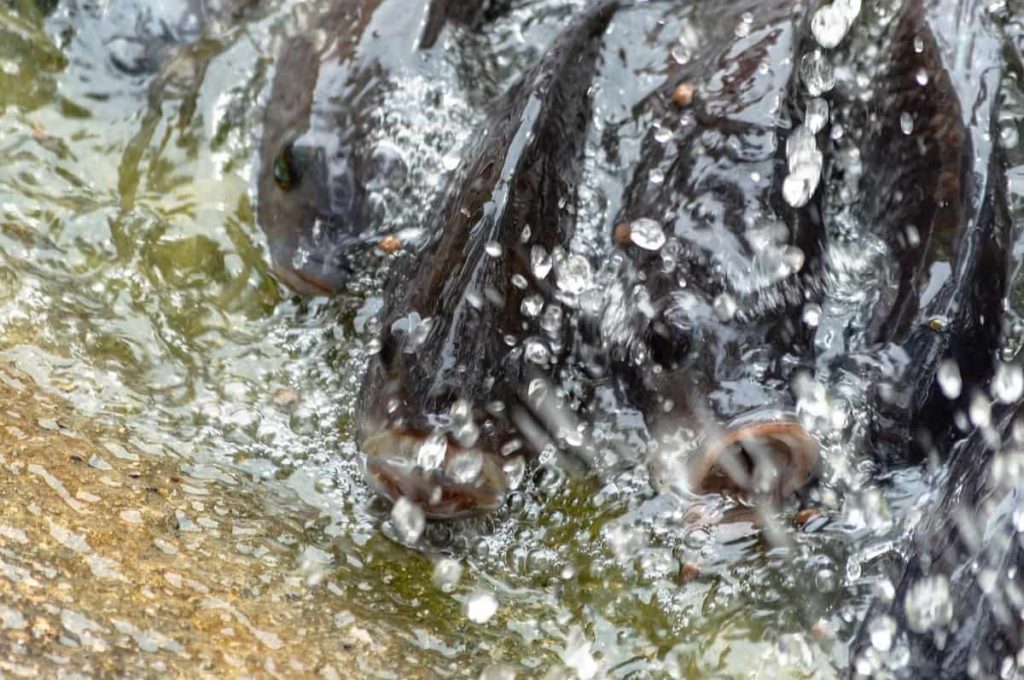
Health management in cage culture
Intensive cage farming has the potential to cause disease epidemics. The buildup of garbage, crowding, handling, water quality parameters change, and bio-fouling are the primary causes of infectious diseases. Vibriosis, which is caused by a bacterium species called Vibrio, is the most prevalent sickness seen in zoo animals. Farmed fish can suffer fin and skin damage due to cage abrasion.
Choosing a suitable location, stocking density, and cautious stock management can reduce infections and diseases. Fish farmers must keep detailed records of everything from weather conditions to water quality metrics to feeding rates, lengths, and weights of fish they’ve tested to changes in their fish’s behavior. Assessment of health status is made easier by these data.
Harvesting details in cage culture
For optimal profit, harvesting may be done by current market conditions. To prevent a glut on the market and a subsequent drop in the selling price, it is possible to undertake partial stock harvesting by initially harvesting the bigger fish. On-site documentation of harvests is required. One needs a post-harvesting and marketing plan to succeed in marine cage farming.
Facilities such as fishing boats and gear, icing facilities, holding and storage facilities, live-fish transportation, and connections to post-harvest processing facilities and market chains should be available at the production centers.
Cost to start a cage culture fish farm in India
Income details of cage culture of 8 cages, each 10*10 sq. feet.
Capital costs
| Item | Cost (in INR) |
| Cage frame | 4,00,000 |
| Netting | 2,00,000 |
| Installation charges | 50,000 |
| Total | 6,50,000 |
Recurring costs
| Item | Cost (in INR) |
| Labour (net tying) | 30,000 |
| Fry (fingerlings) | 3,00,000 |
| Feed | 1,00,000 |
| Labour (daily maintenance) | 3,00,000 |
| Labour (harvest) | 2,00,000 |
| Miscellaneous | 50,000 |
| Total | 9,80,000 |
Total cost of the venture: 6,50,000 + 9,80,000 = 16,30,000
Income table
| Item | Cost (in INR) |
| Sales of the venture per cage | 3,00,000 |
| Number of cages in the venture = 8 | |
| Total income of the venture | 24,00,000 |
| Total expenditure of the venture | 16,30,000 |
| Profit in the first year | 7,70,000 |
| Profit in the second year | 14,20,000 |
Conclusion
Cage culture in the water is a dangerous job that requires a high degree of caution. As a result, proper safety precautions must be taken to avoid mishaps, including deaths. Mandatory lifesaving equipment, such as jackets, communication devices, and first aid kits, shall be installed at the cage site. Everyone who works in the sea cage must wear a life jacket. Commercial-quality aquaculture relies heavily on cage culture, as we’ve seen, and this is good news for farmers in the future.
- Economical Aquaculture: A Guide to Low-Budget Fish Farming
- 15 Common Planting Errors That Can Doom Your Fruit Trees
- How to Make Houseplants Bushy: Effective Tips and Ideas
- Innovative Strategies for Boosting Coconut Pollination and Yield
- Pollination Strategies for Maximum Pumpkin Yield
- The Complete Guide to Chicken Fattening: Strategies for Maximum Growth
- Natural Solutions for Tulip Problems: 100% Effective Remedies for Leaf and Bulb-Related Issues
- Revolutionizing Citrus Preservation: Towards a Healthier, Greener Future
- Natural Solutions for Peony Leaf and Flower Problems: 100% Effective Remedies
- Maximizing Profits with Avocado Contract Farming in India: A Comprehensive Guide
- Natural Solutions for Hydrangea Problems: 100% Effective Remedies for Leaf and Flowers
- The Ultimate Guide to Choosing the Perfect Foliage Friend: Bringing Life Indoors
- From Sunlight to Sustainability: 15 Ways to Use Solar Technology in Agriculture
- The Ultimate Guide to Dong Tao Chicken: Exploring from History to Raising
- The Eco-Friendly Makeover: How to Convert Your Unused Swimming Pool into a Fish Pond
- Mastering the Art of Delaware Chicken Farming: Essentials for Healthy Backyard Flocks
- 20 Best Homemade Fertilizers for Money Plant: DIY Recipes and Application Methods
- How to Craft a Comprehensive Free-Range Chicken Farming Business Plan
- Brighten Your Flock: Raising Easter Egger Chickens for Beauty and Bounty
- How to Optimize Your Poultry Egg Farm Business Plan with These Strategies
- Subsidy for Spirulina Cultivation: How Indian Government Schemes Encouraging Spirulina Farmers
- Ultimate Guide to Raising Dominique Chickens: Breeding, Feeding, Egg-Production, and Care
- Mastering the Art of Raising Jersey Giant Chickens: Care, Feeding, and More
- Ultimate Guide to Raising Legbar Chickens: Breeding, Farming Practices, Diet, Egg-Production
- How to Raise Welsummer Chickens: A Comprehensive Guide for Beginners
- How to Protect Indoor Plants in Winter: A Comprehensive Guide
- Ultimate Guide to Grow Bag Gardening: Tips, Tricks, and Planting Ideas for Urban Gardeners
- Guide to Lotus Cultivation: How to Propagate, Plant, Grow, Care, Cost, and Profit
- Agriculture Drone Subsidy Scheme: Government Kisan Subsidy, License, and How to Apply Online
- Ultimate Guide to Raising Araucana Chickens: Breed Profile, Farming Economics, Diet, and Care
- Bringing Hydroponics to Classroom: Importance, Benefits of Learning for School Students
- Ultimate Guide to Raising Polish Chickens: Breed Profile, Farming Economics, Diet, and Care
- Ultimate Guide to Raising Australorp Chickens: Profile, Farming Economics, Egg Production, Diet, and Care
- Silkie Chicken Farming: Raising Practices, Varieties, Egg Production, Diet, and Care
- Sussex Chicken Farming: Raising Practices, Varieties, Egg Production, Diet and Care
- Homemade Feed Formulations for Livestock: Discover Cost-effective Starter to Finisher Feed Recipes
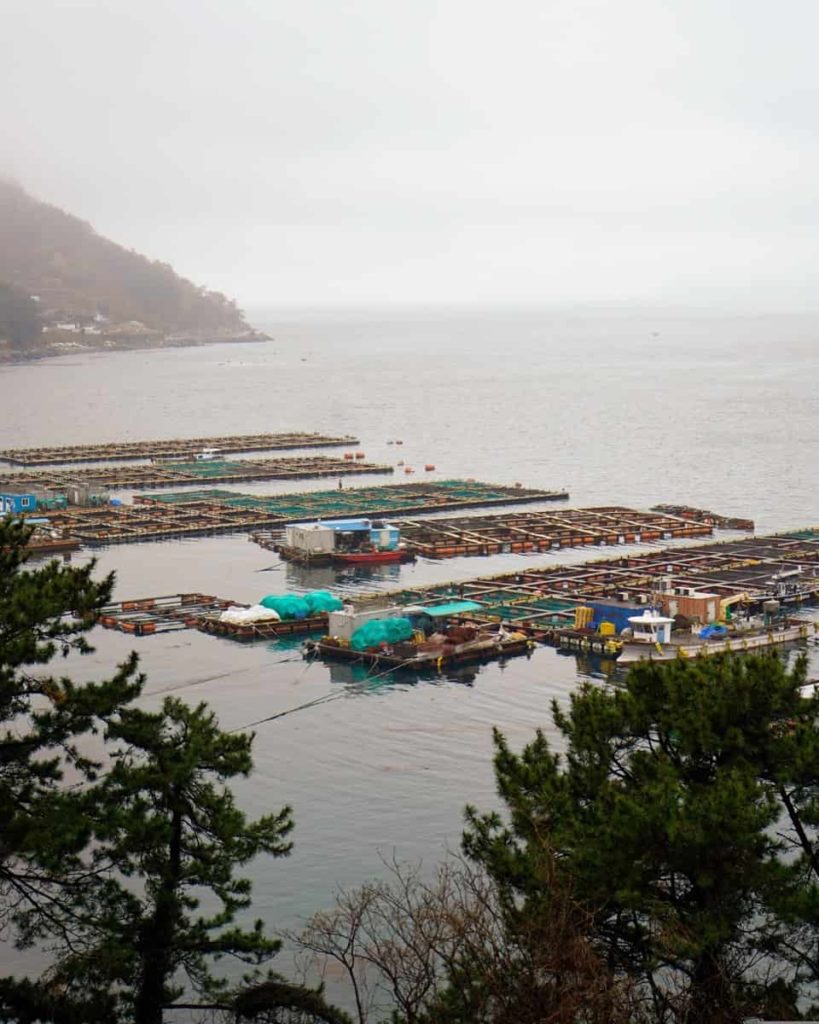
what is the capacity of 1 cage for cultivating pangasius for 1- 2 kg size